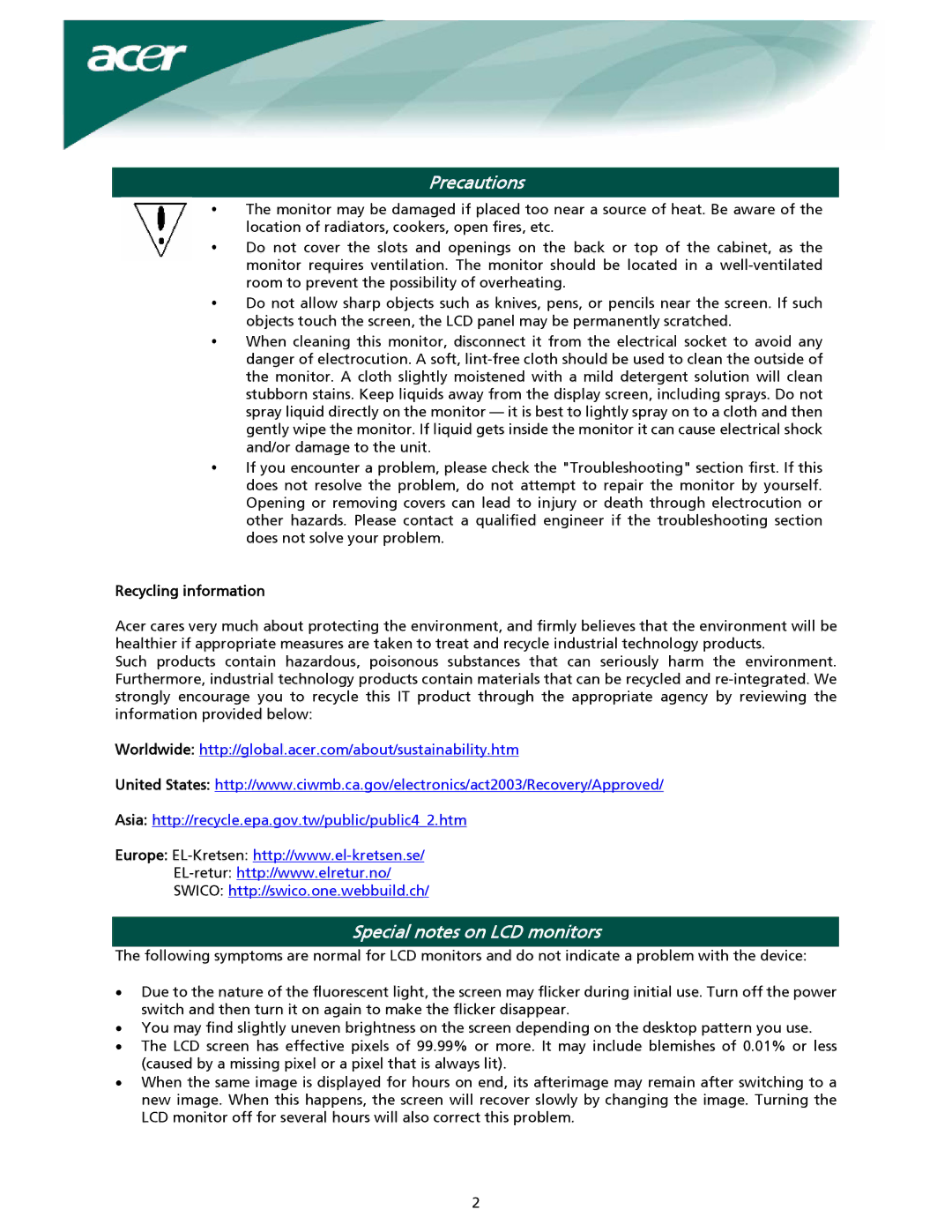
Precautions
yThe monitor may be damaged if placed too near a source of heat. Be aware of the location of radiators, cookers, open fires, etc.
yDo not cover the slots and openings on the back or top of the cabinet, as the monitor requires ventilation. The monitor should be located in a
yDo not allow sharp objects such as knives, pens, or pencils near the screen. If such objects touch the screen, the LCD panel may be permanently scratched.
yWhen cleaning this monitor, disconnect it from the electrical socket to avoid any danger of electrocution. A soft,
yIf you encounter a problem, please check the "Troubleshooting" section first. If this does not resolve the problem, do not attempt to repair the monitor by yourself. Opening or removing covers can lead to injury or death through electrocution or other hazards. Please contact a qualified engineer if the troubleshooting section does not solve your problem.
Recycling information
Acer cares very much about protecting the environment, and firmly believes that the environment will be healthier if appropriate measures are taken to treat and recycle industrial technology products.
Such products contain hazardous, poisonous substances that can seriously harm the environment. Furthermore, industrial technology products contain materials that can be recycled and
Worldwide: http://global.acer.com/about/sustainability.htm
United States: http://www.ciwmb.ca.gov/electronics/act2003/Recovery/Approved/
Asia: http://recycle.epa.gov.tw/public/public4_2.htm
Europe:
SWICO: http://swico.one.webbuild.ch/
Special notes on LCD monitors
The following symptoms are normal for LCD monitors and do not indicate a problem with the device:
•Due to the nature of the fluorescent light, the screen may flicker during initial use. Turn off the power switch and then turn it on again to make the flicker disappear.
•You may find slightly uneven brightness on the screen depending on the desktop pattern you use.
•The LCD screen has effective pixels of 99.99% or more. It may include blemishes of 0.01% or less (caused by a missing pixel or a pixel that is always lit).
•When the same image is displayed for hours on end, its afterimage may remain after switching to a new image. When this happens, the screen will recover slowly by changing the image. Turning the LCD monitor off for several hours will also correct this problem.
2
